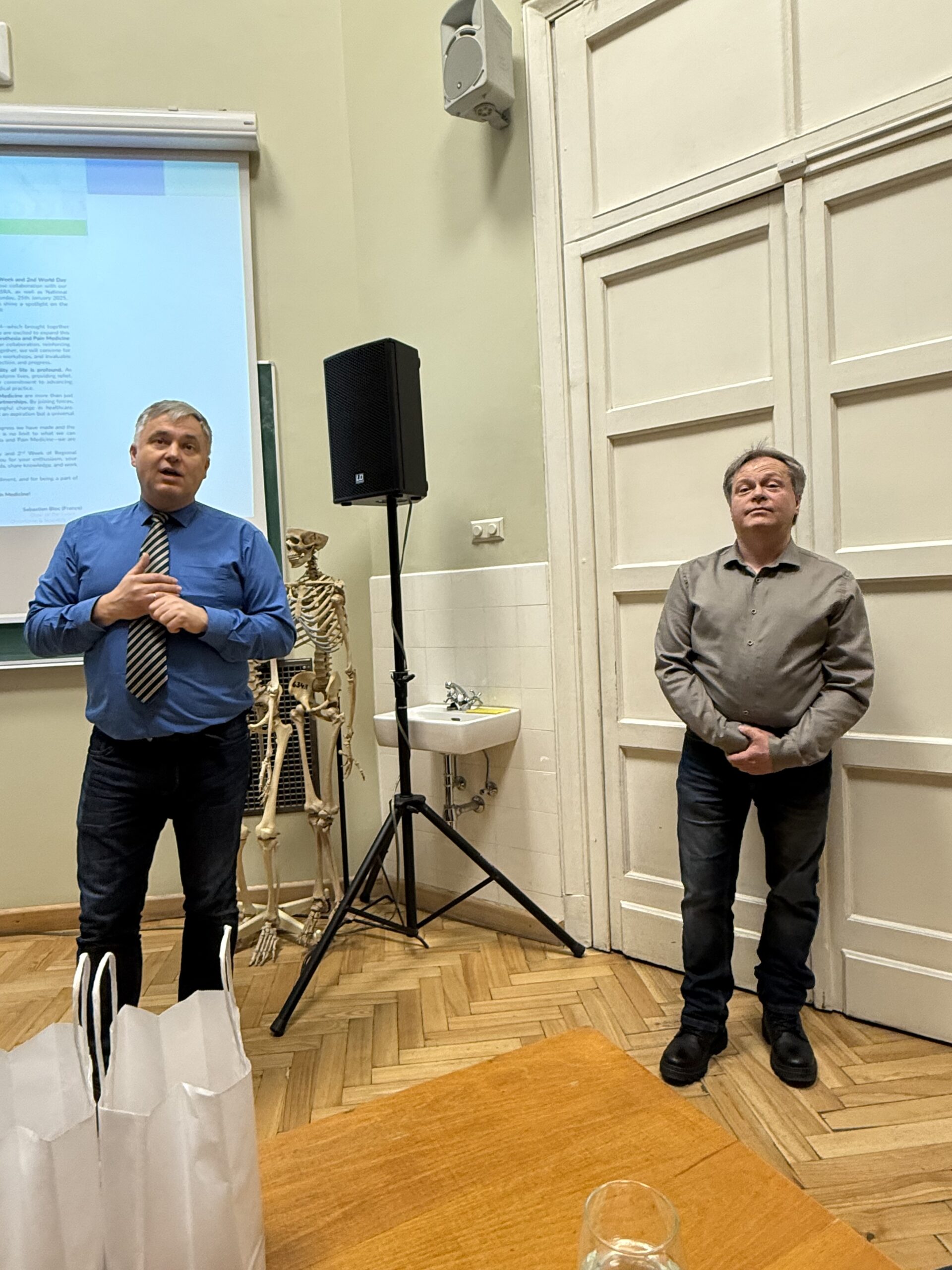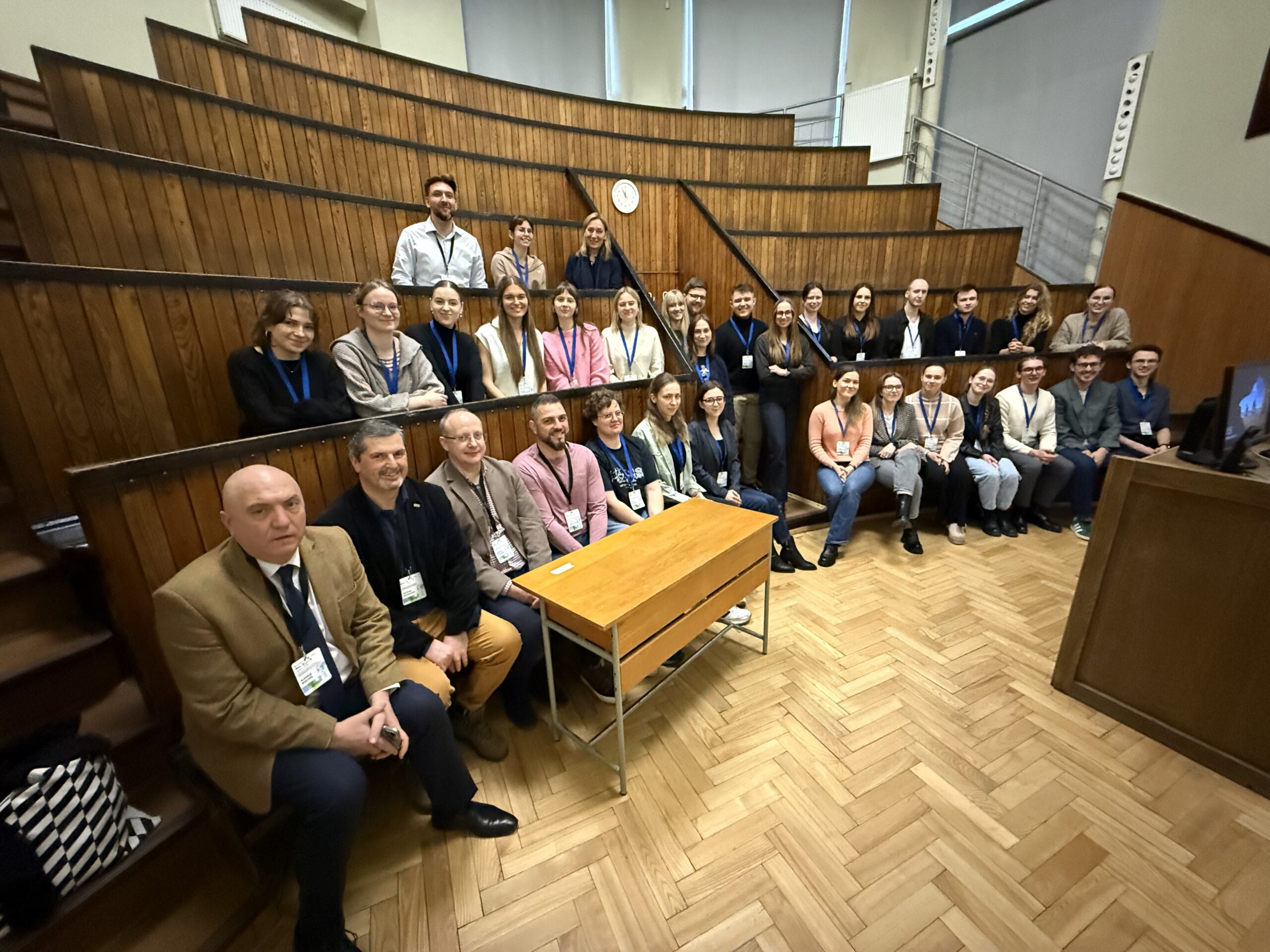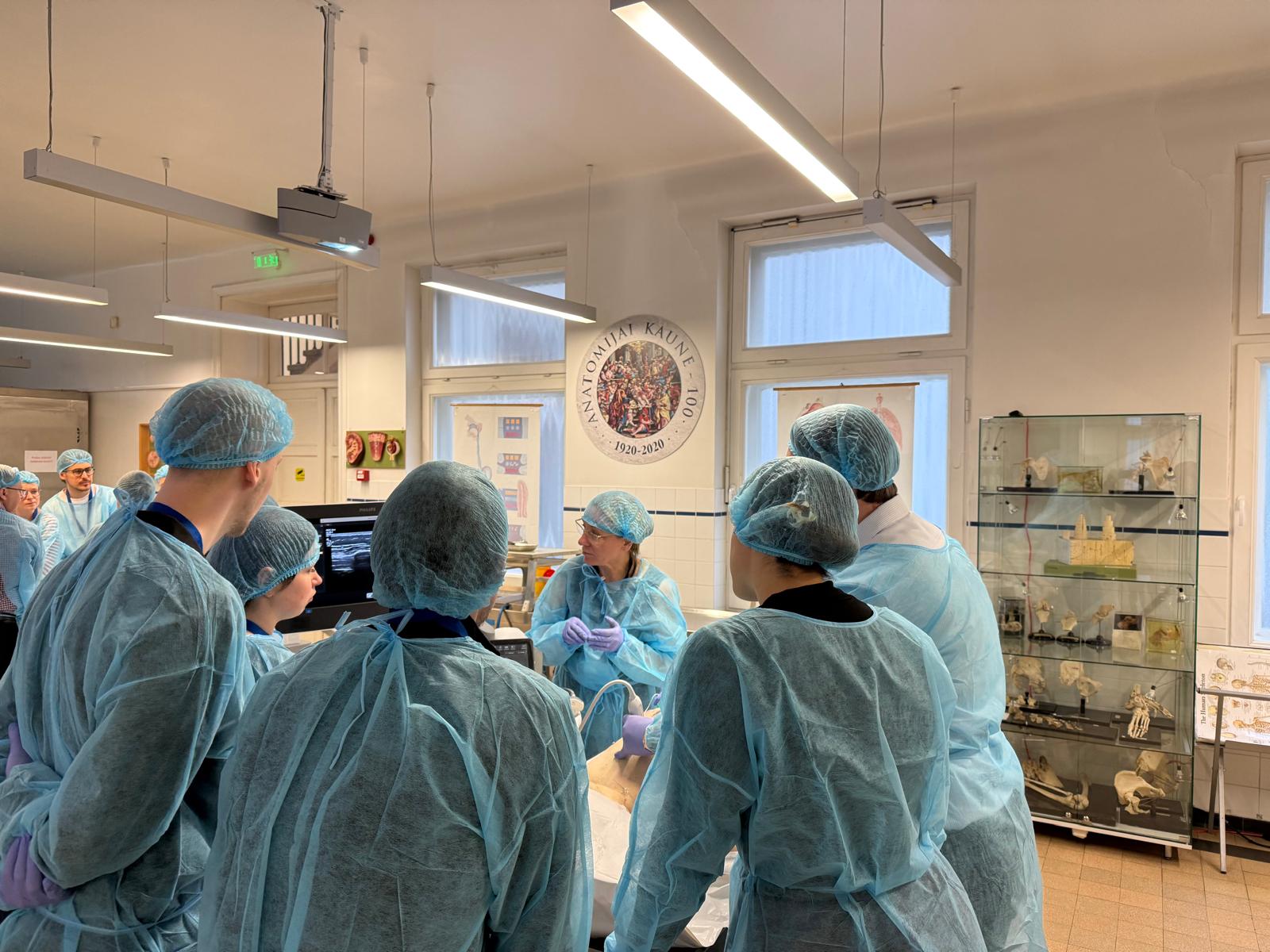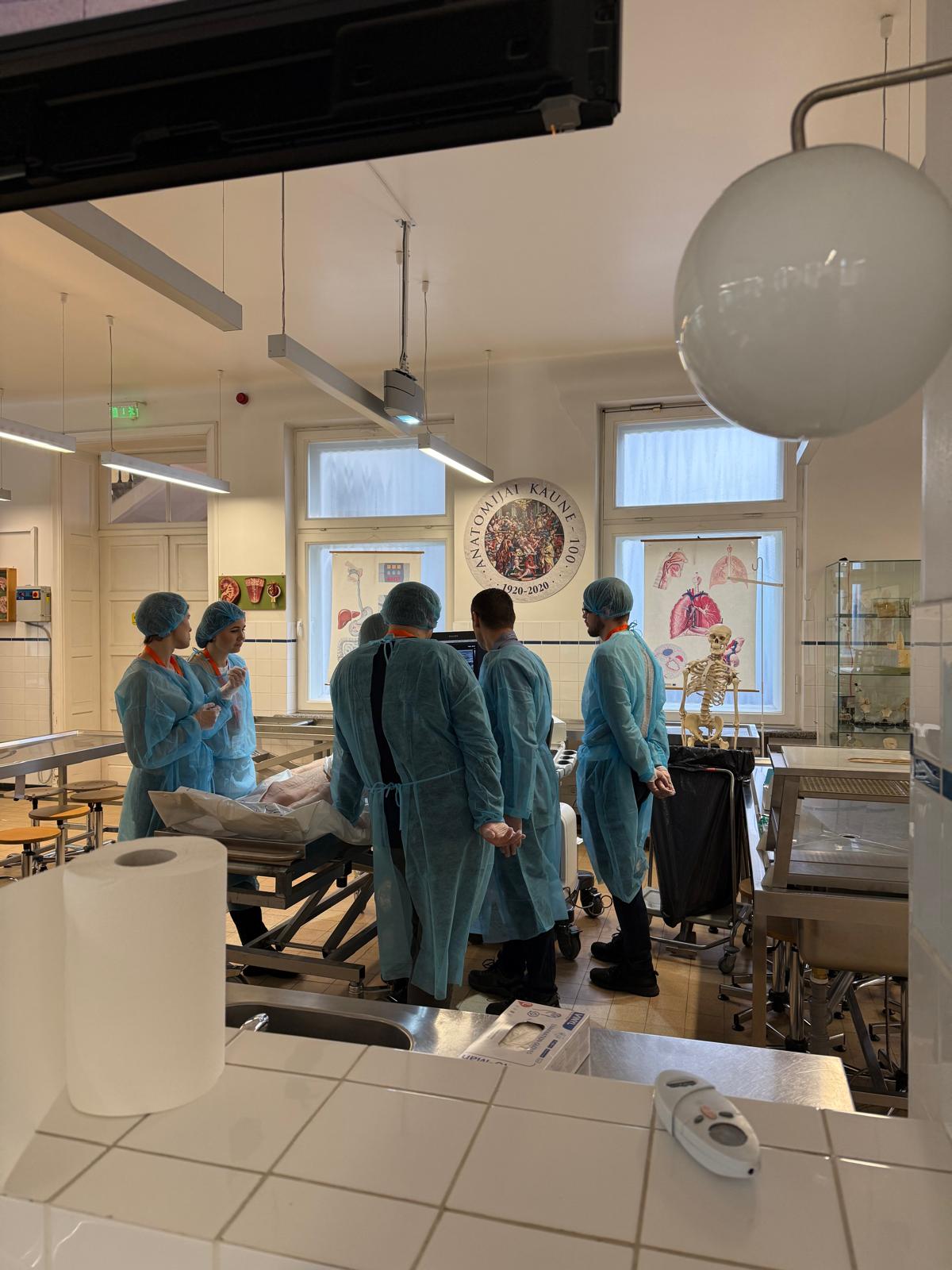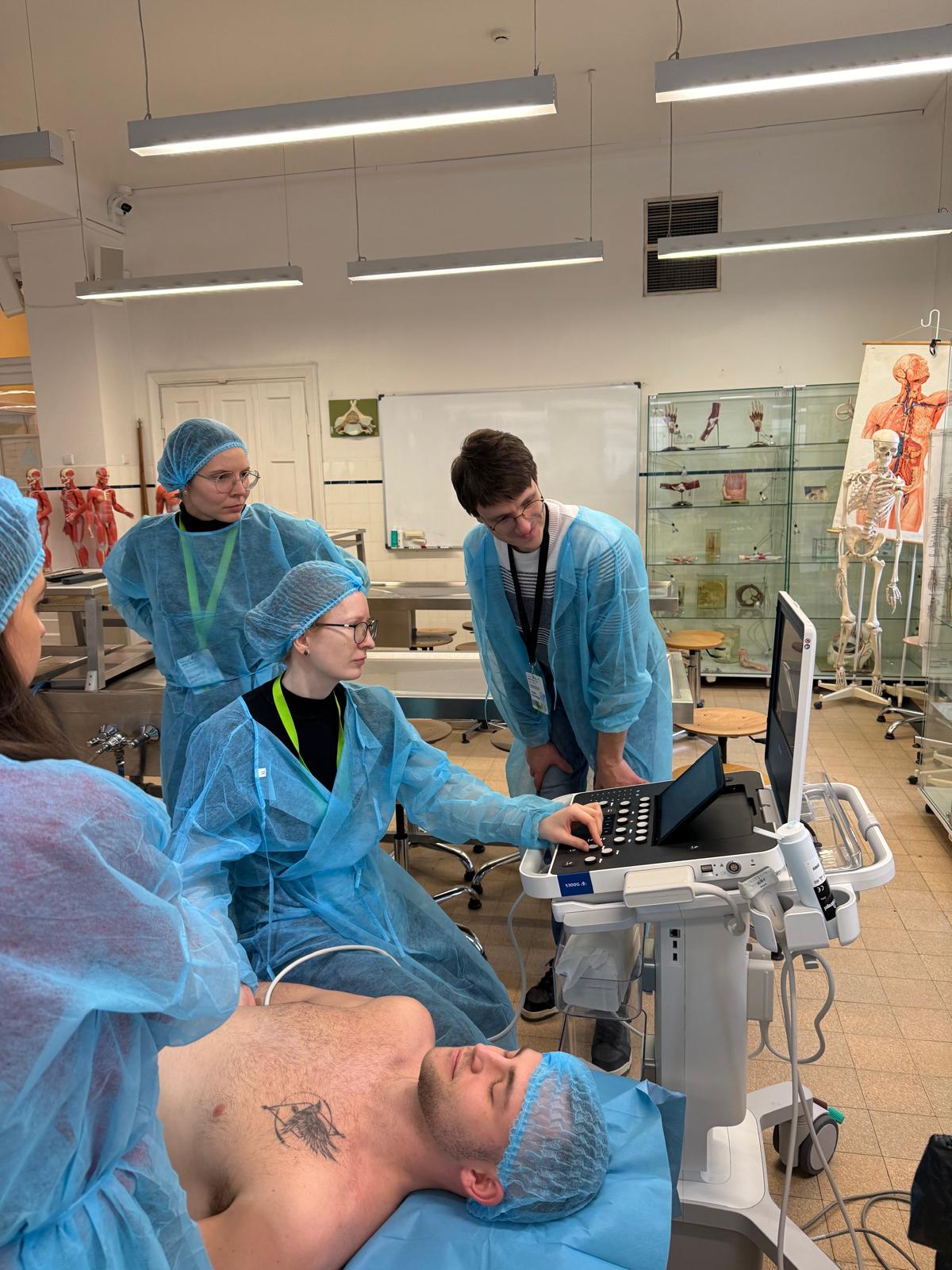Unique Opportunity for Anaesthesiology and Nephrology Residents to Develop Skills using Human Remains
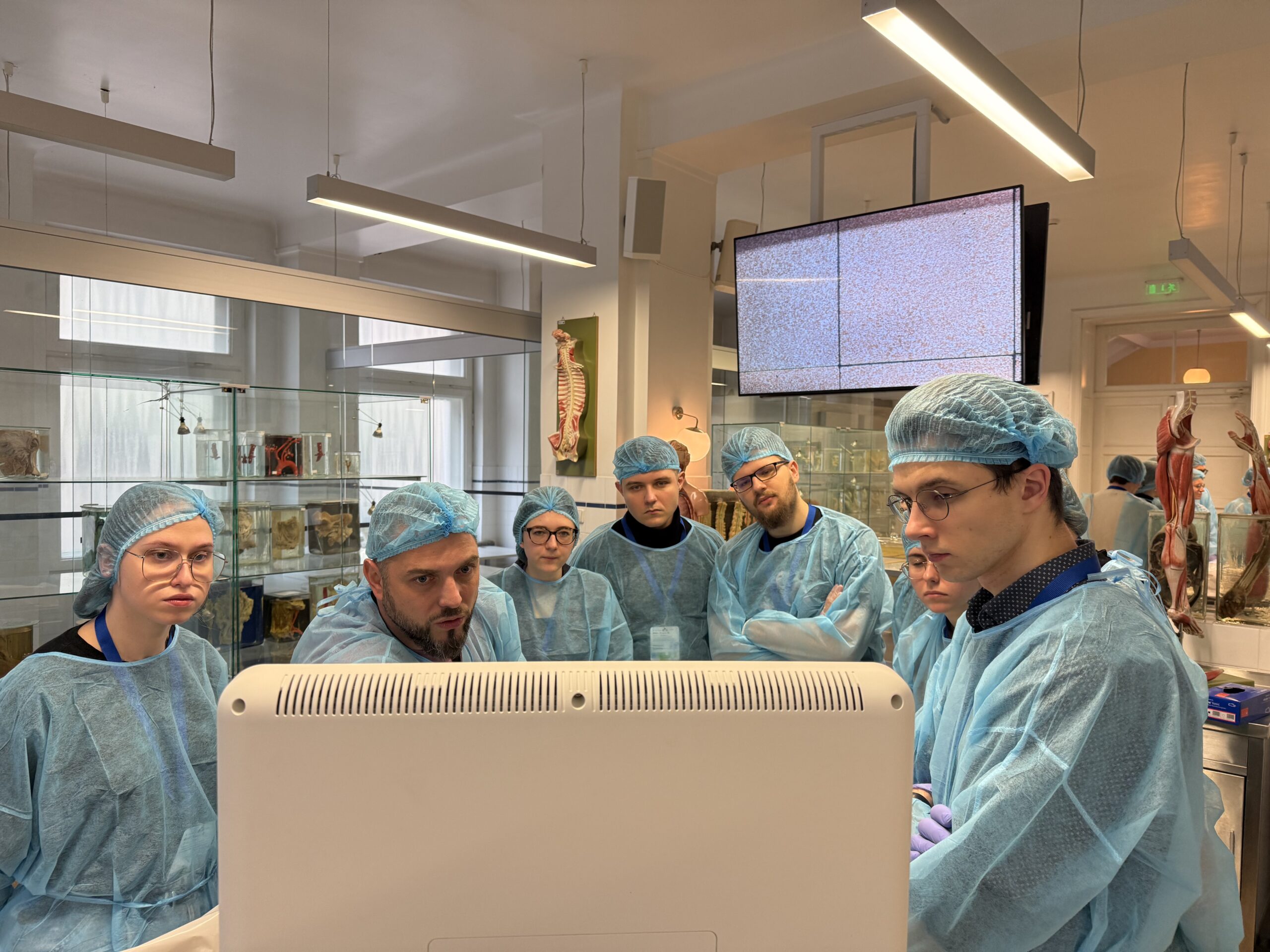
The 2nd World Day of Regional Anaesthesia and Pain Medicine was celebrated on 27 January. Same as last year, the Faculty of Medicine of the Lithuanian University of Health Sciences (LSMU) joined the celebration by holding training on Rapid Ultrasound Diagnostic Protocols and Patient Volemia Assessment.
The training was aimed at senior anaesthesiology residents and nephrology doctors and residents.
This year’s event was international, with teachers and students not only from Lithuania, but also from Latvia, Estonia, and Ukraine.
“I am glad that this excellent event is becoming a beautiful tradition and an opportunity to develop links between different universities and countries,” said Prof. Andrius Macas, Dean of the LSMU Faculty of Medicine.
Thanks to the cooperation with the LSMU Institute of Anatomy, the participants were able to practice their skills not only on volunteers, but also using specially prepared human remains.
“This is a unique experience and an opportunity that we do not have anywhere else in Lithuania. Human remains are among the best tools for learning regional anaesthesia skills as no moulage or simulation tool can replicate the anatomy of the human body so accurately,” explained the Dean.
On the first day, senior year anaesthesiology residents, nephrologists, and their junior colleagues took part in a practical session on the use of ultrasound in emergency diagnostics. During these sessions, the participants learnt how to perform rapid ultrasound diagnostic protocols (FATE, FAST, BLUE), which are used for the primary diagnosis of critical conditions, as well as targeted ultrasound examinations in nephrology.
On the second day, junior anaesthesiology residents enhanced their knowledge of the basics of regional anaesthesia, learned the basics of ultrasound diagnostics and needle control, which they would continue developing in their clinical work.
“This training is unique in that the specifics of ultrasound, the visualisation of vascular and neural structures and the manipulation in certain procedures are taught using human remains. This is an extraordinary opportunity for young colleagues to practice various upper and lower blockages for the first time, to feel the sensation of a needle prick, and to learn the techniques of needle extraction in ultrasound images, which are difficult to visualise in your head by learning from textbooks only. Such training helps to consolidate knowledge and prepare for real situations in clinical practice, ensuring patient safety,” said Prof. Arūnas Gelmanas, one of the organisers of the training and professor at the Department of Anaesthesiology, LSMU Faculty of Medicine.
“We hope that such trainings will become not only a nice festive tradition, uniting anaesthesiologists from all over the world and bringing together Lithuanian and foreign colleagues to share their knowledge, but also a high-level standard for training specialists at the LSMU anaesthesiology – reanimatology residency,” added Prof. A. Macas, Dean of the Faculty.

